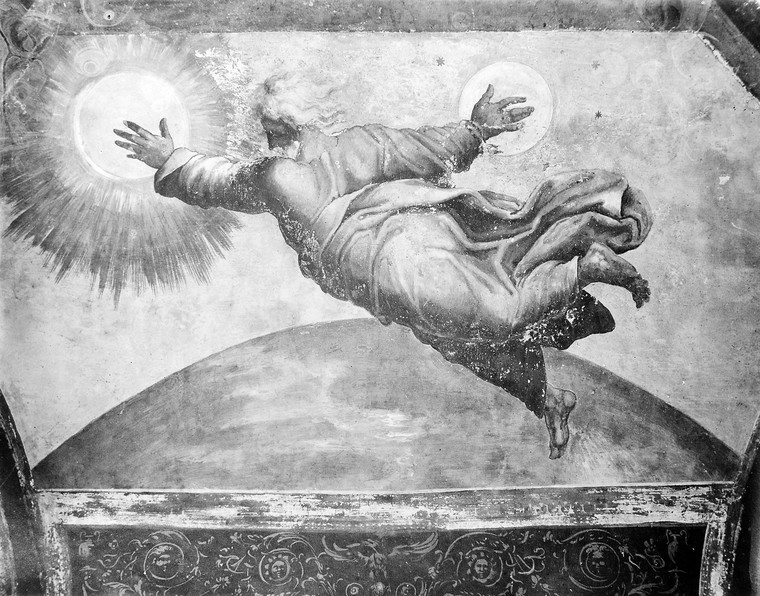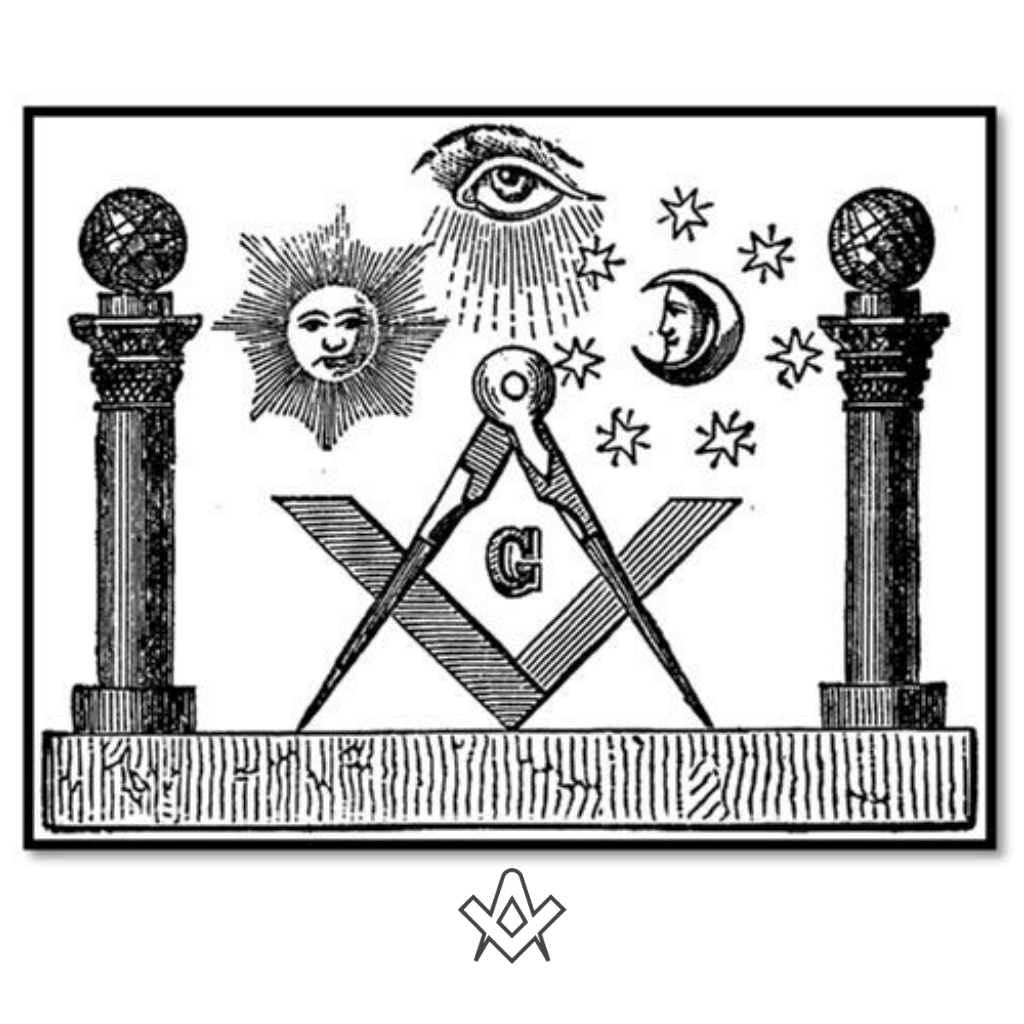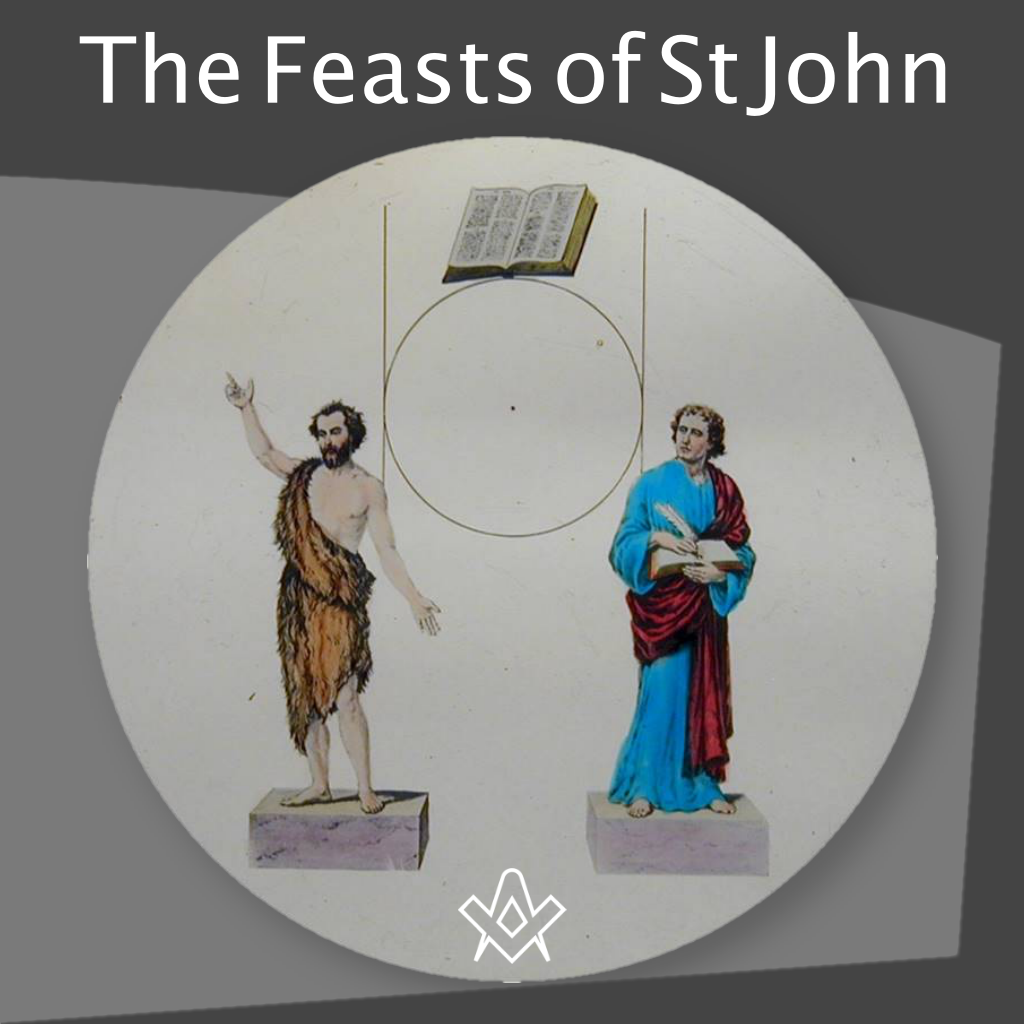Why do Freemasons historically celebrate two feasts of saints, both named John?
The feast of John the Baptist falls on 24 June, and that of John the Evangelist on 27 December, roughly marking the period of mid-summer and mid-winter.
During the Eighteenth Century, the Premier Grand Lodge of England and the Grand Lodge of Ireland favoured the day of John the Baptist, while the Grand Lodge of Scotland, the Antient Grand Lodge of England and the Grand Lodge of All England at York installed their Grand Masters on the feast day of John the Evangelist.
The United Grand Lodge of England was formed on 27 December 1813.
The first Grand Lodge was formed on 24 June, on the feast day of John the Baptist in 1717.
This may have arisen from a very old tradition, since the Baptist appears to have been regarded as the patron of stonemasons in continental Europe during the Middle Ages.
The guild of masons and carpenters attached to Cologne Cathedral was known as the Fraternity of St John the Baptist.
The earliest surviving record of Grand Lodge of Ireland installing a Grand Master is dated to 24 June 1725.
As records of individual lodges appear in Ireland and in the Antients in England, it seems many of them met to install a new master twice a year, on the feast days of both the Baptist and the Evangelist.
John the Evangelist is particularly associated with Scottish lodges.
The Lodge of Edinburgh was associated with the aisle of St. John the Evangelist in St. Giles Cathedral from the 15th century.
The Grand Lodge of All England, and its predecessor, the Ancient Society of Freemasons in the City of York, elected and installed their President, then from 1725 their Grand Master on the day of the Evangelist, and in London the Antient Grand Lodge of England elected their new Grand Masters on the same day.
When the Antients and the Moderns (the Premier Grand Lodge) eventually came together in the United Grand Lodge of England, it was on the Feast of the Evangelist in 1813.
Source: wikipedia
The Festival of St John the Evangelist
From The Craftsman – December 1866
All Christian nations celebrate Christmas time – the anniversary of the birth of Christ, the founder of the Christian religion and the object of its worship.
Many curious ceremonies are practiced by the people of Northern Europe, on each recurrence of this festival time, the signification and origin of which are little thought of by those who partake in them.
The bringing in of the great Yule Log wherewith to make the great Christmas fire.
The elevation of the oak tree bough, intertwined with the slender branches of the mistletoe, in each house, forming the kissing bush, which, for the period of twelve days, reigns supreme, and requires from all who pass beneath it, whether man or maid, submission to the kissing ordeal or payment of a fine.
These and many other Christmas customs of the old world, are associated very closely with the commemoration of this anniversary season, yet in themselves are so foreign to the occasion, or rather are so wanting in all suggestion of meaning as appertaining to this Christian festival, that it is not a little surprising that more do not ask whence come these strange and peculiar usages.
They have no natural relationship to the celebration of the anniversary of Christ’s birth.
There is but one answer to the inquiry here suggested, and that is, that these customs properly belong to the celebration of an anniversary season celebrated in the North of Europe for as many years before the birth of Christ as that time is previous to the present.
Two days after Christmas comes the anniversary of the day given to St John the Evangelist by the Church Calendar.
Anciently this was the great Masonic Festival Day, latterly much neglected for St John the Baptist’s day, six months earlier in the year.
The Evangelist’s Day was observed as the great Masonic Festival time from the period of the middle ages, when the Masons in Europe, actuated by their conflict with the Moslems of the East, began to Christianise their system by the adoption of St John as their patron Saint.
Saint John the Baptist’s day, on the other hand, did not rise to any note, even among Masons, until after the year 1720.

St John the Baptist. Colour lithograph by C. Schultz after H. Memling.
IMAGE LINKED: Wellcome Attribution 4.0 International (CC BY 4.0)
We have alluded to the Christmas customs in this connection, and for this purpose, namely, to claim that those customs belong with quite as much, if not more propriety to the Masonic anniversary of St. John the Evangelist on the 27th of December.
We do not claim that these customs partake of any relationship to the Evangelist more than to his Lord and Master.
The customs to which we allude are associated with this period of the year and refer to celebrations observed by Masons long before the days of St John or Jesus Christ.
Centuries before in the oak forests of Germany or Britain, the old time Druids and Druidesses presided over similar festivals.
The conquering church adopted the customs of the period, and adapting them to their new religious systems, assigned to them a Christian name, but failed to give to them a Christian signification.
The Masons, finding the St John’s day of the Church occurred about the time when, for reasons having nothing to do with St. John the Evangelist, they had been in the habit of enjoying a festival season for ages, chose to call it St John’s day, and so observe it;
until those who have inherited their Masonry, having overlooked the true Masonic reason for the celebration at this season of the year, have very generally ceased to celebrate it, even as the anniversary of one of their patron saints.
We regard it as very much to be regretted that Masons fail to celebrate the day of the Evangelist St John. It is a loss to Masonry.
It is a surrender of an opportunity to direct the minds of the Fraternity to the origin of their Institution, antedating the times of Christ and the Evangelist, antedating the times of the ancient Druids, who in celebrating the great winter festival were merely commemorating a season which had been observed by men and Masons from the beginning.

The creation of Sun and Moon. Fresco in the Vatican
IMAGE LINKED: Wellcome Attribution 4.0 International (CC BY 4.0)
And God said;
Let there be lights in the firmament of the heaven, to divide the day from the night;
and let them be for signs and for seasons, and for days and years.
As the sun ruled the day and the moon the night, so the moon marked the week of seven days and by its quartering the month of four weeks; so the sun measured the year, and the earth by its revolution and the eccentricity of its axis, pointed out the equinoxes and the solstices.
Very much in Masonry has thus an astronomical origin. The moon has always been used to indicate by its quarterings the time for lodge meetings.
And among all the nations of antiquity, the equinoxes and solstices were ever regarded as seasons of great importance.
Especially in the ancient mysteries, was great stress laid upon the solstices, and the winter and summer solstice, the shortest day and the longest day of the year, commemorated with great ceremony.

The well-known Masonic symbol, the point within a circle bounded by the two parallels – refers to this;
the point, the sun, the centre of the solar system;
the circle, the earth’s orbit around the sun;
the parallels, where they touch the circle, the winter and summer solstice, the limit of the sun’s apparent course to the Northward and Southward of the Equator;
the left hand perpendicular, B**Z or the Northern Pillar,
the right hand perpendicular, J****N, the Southern Pillar,
standing in the porch of the Temple of the Lord, which is the Universe,
while the Bible, as now placed in the symbol, or more properly in our opinion the sun, as the symbol of divinity, has its place in the Orient.

Just in the same manner as the Christmas celebration, and the Evangelist St John’s celebration, Masonically refer to seasons having an astronomical origin, so even do those celebrated pillars in front of Solomon’s temple.
Although usually referred to the pillar of cloud and the pillar of fire, which followed and preceded the Hebrews in the wilderness, –
so even do these pillars refer to that older custom of erecting in front of temples one pillar to fire and another to the wind, in allusion to the solstices, in the one when the rays of Sol are most fiery, and in the other, when the winds of Boreas are most piercing and violent.
The summer solstice occurs about the twenty-first of June, near enough to the anniversary of St John the Baptist to lead to the ready adoption by the middle age Christianising Masons of that day, in preference to the twenty-first.
The winter solstice occurs about the twenty-second of December, near enough to the day given by the Church to St John the Evangelist, to induce the Masons to surrender to it their preference for the twenty-second.
A day or two either way, it was thought, no doubt, made no essential difference.
But a great mistake was committed. It cast adrift the Fraternity from the reverence for days and seasons of deep Masonic significance and led them to the adoption of anniversaries which have no essential Masonic meaning.
And during the present generation the entire neglect of the anniversary of St John the Evangelist has led to the surrender of the Christmas festivities to the Church, which more properly and only legitimately belong to the Freemasons.
Can this departure from old Masonic custom have gone so far as to render it altogether hopeless to expect that the great Masonic festival of the winter solstice may ever be revived?
Article by: Editorial
An Article based on an article previously published in The Square Magazine, updated with additional content.
Recent Articles: symbolism
 Legends and Symbols in Masonic Instruction Explore the significance of Masonic legends and symbols in this insightful post. Discover how Freemasonry imparts wisdom through allegorical narratives and emblematic imagery, revealing profound moral and philosophical lessons. Unveil the deep connections between Masonic teachings and the broader quest for understanding life’s fundamental questions. |
 Discover the mystical significance of the number 33. From its mathematical marvels and artistic influence in numerology to its esteemed place in Freemasonry, delve into the history and power of this master number. Explore why 33 holds such profound meaning in various spiritual and philosophical traditions. |
 The Practice of Freemasonry - P1 Embark on a transformative journey with Freemasonry, where the exploration of your Center unlocks the Perfect Ashlar within. Through the practices of Brotherly Love, Relief, Truth, and Cardinal Virtues, discover a path of enlightenment and self-improvement. Embrace the universal creed that binds us in the pursuit of our true essence. |
 Discover the fascinating history and significance of the Warrant of Constitution within Freemasonry. Unveil the evolution of this crucial authorization, its role in legitimizing Lodges, and its lasting impact on the global brotherhood of Freemasons. Explore the intricate link it provides between tradition and modern practice. |
 Freemasonry: Unravelling the Complexity of an Influential Organization Mysterious and captivating, Freemasonry has piqued the interest of seekers and skeptics alike. With its intricate blend of politics, esotericism, science, and religion, this enigmatic organization has left an indelible mark on society. Prepare to delve into the secrets of Freemasonry and unlock its hidden depths. |
 Unlocking the Mysteries of Freemasonry: In the hallowed halls of Freemasonry, a powerful symbol lies at the heart of ancient rituals and teachings—the Volume of the Sacred Law. This sacred book not only guides the spiritual and moral journey of Freemasons but also serves as a beacon of universal wisdom and enlightenment. |
 The Ancient Liberal Arts in Freemasonry Embark on a journey of self-improvement and wisdom with Freemasonry's guiding principles. Ascend the winding stairs of moral cultivation, analytical reasoning, and philosophical understanding. Embrace arithmetic's mystical properties and geometry's universal truths. Let the harmony of the universe inspire unity and growth. Discover the profound, hidden knowledge in Freemasonry's path to enlightenment. |
 Initiation rituals around the world are filled with fascinating elements and different images. One of them is that of darkness. When societies speak of darkness, they often mean a lack of knowledge, a lack of choice, or a symbol of evil. During initiation rituals, darkness is used to represent the initiate's lack of knowledge about the world, society, and initiation in general. It can also represent the initiate's inability to make a choice or endure a situation. Whether you have participated in an initiation rite or not, the meaning of darkness remains an intriguing concept worth exploring. Initiation rituals around the world are filled with fascinating elements and different images. One of them is that of darkness. When societies speak of darkness, they often mean a lack of knowledge, a lack of choice, or a symbol of evil. During initiation rituals, darkness is used to represent the initiate's lack of knowledge about the world, society, and initiation in general. It can also represent the initiate's inability to make a choice or endure a situation. Whether you have participated in an initiation rite or not, the meaning of darkness remains an intriguing concept worth exploring. |
 Masonic Deacon rods potentially trace their origins to Greek antiquity, symbolically linked to Hermes' caduceus. As Hermes bridged gods and mortals with messages, so do Masonic Deacons within the lodge, reinforcing their roles through ancient emblems. This connection underscores a profound narrative, weaving the fabric of Masonic rites with the threads of mythological heritage, suggesting the rods are not mere tools but bearers of deeper, sacred meanings that resonate with the guardianship and communicative essence of their divine counterpart, Hermes, reflecting a timeless lineage from myth to Masonic tradition. |
 The biblical pillars erected by Solomon at the Temple's porch, hold a profound place in history. These brass behemoths are not mere decorations; they are symbols of strength, establishment, and divine guidance. Explore their fascinating construction, dimensions, and the deep meanings they carry in both biblical and Masonic contexts. |
 Unlocking the Mind's Potential: Dive deep into ground breaking research revealing how simple daily habits can supercharge cognitive abilities. Discover the untapped power within and redefine your limits. Join us on this enlightening journey and transform your world! |
 Dive deep into the symbolic importance of the trowel in Masonry, representing unity and brotherly love. From its historical roots in operative masonry to its significance in speculative masonry, this article explores the trowel's multifaceted role. Discover its connection to the sword, the story of Nehemiah, and the Society of the Trowel in Renaissance Florence. Unravel the layers of meaning behind this enduring Masonic symbol. |
 Symbolism of The Builder's Jewel Batty Langley's "The Builder’s Jewel" (1741) is a visual masterpiece of Masonic symbolism, showcasing Langley's deep understanding of Freemasonry. The frontispiece highlights key symbols like the three pillars and the legend of Hiram Abiff, emphasizing Langley's dedication to Masonic traditions and teachings. |
 Unveil the mystique of the colour blue in Masonic symbolism. A hue evoking universal friendship and benevolence, its roots span ancient cultures, infusing Freemasonry's core values. This article explores blue's profound significance, guiding Freemasons towards wisdom and spiritual enlightenment. Discover the fascinating journey of this universal symbol. |
 Discover the intriguing world of the plumb in Masonic symbolism with our in-depth analysis. Uncover its rich history, moral teachings, and significance in Freemasonry, guiding members on their path to truth, integrity, and justice. Immerse yourself in the captivating power of this symbol that shapes lives within the brotherhood. |
 Unlock the mysteries of Freemasonry with 'The Key,' a profound Masonic symbol. This seemingly simple instrument holds a deeper meaning, teaching virtues of silence and integrity. Explore its ancient roots, from Sophocles to the mysteries of Isis, and discover how it symbolizes the opening of the heart for judgment. |
 Unlock the secrets of the Freemasonry with The Blazing Star - a symbol that holds immense significance in their rituals and practices. Delve into its history, meaning and role in the different degrees of Freemasonry with expert insights from the Encyclopedia of Freemasonry by Albert Mackey. Discover the mystique of The Blazing Star today! |
 There is no symbol more significant in its meaning, more versatile in its application, or more pervasive throughout the entire Freemasonry system than the triangle. Therefore, an examination of it cannot fail to be interesting to a Masonic student. Extract from Encyclopedia of Freemasonry by Albert Mackey |
 The Hiramic Legend and the Myth of Osiris Hiram Abiff, the chief architect of Solomon’s Temple, is a figure of great importance to Craft Freemasonry, as its legend serves as the foundation of the Third Degree or that of a Master Mason. He is the central figure of an allegory that has the role of teaching the Initiate valuable alchemical lessons. Although his legend is anchored in biblical times, it may have much older roots. |
 This rite of investiture, or the placing upon the aspirant some garment, as an indication of his appropriate preparation for the ceremonies in which he was about to engage, prevailed in all the ancient initiations. Extract from The Symbolism of Freemasonry by Albert G. Mackey |
 The All-Seeing Eye of God, also known as the Eye of Providence, is a representation of the divine providence in which the eye of God watches over humanity. It frequently portrays an eye that is enclosed in a triangle and surrounded by rays of light or splendour. |
 What's in a Word, Sign or Token? Why do Freemasons use passwords, signs, and tokens? As Freemasons we know and understand the passwords, signs and tokens (including grips), which are all used a mode of recognition between members of the fraternity. |
 A Temple of Living Stones: Examining the Concept of a Chain of Union What are the origins of the Chain of Union? And how did they come about ? The answers may surprise some members as W Brother Andrew Hammer investigates, author of Observing the Craft: The Pursuit of Excellence in Masonic Labour and Observance. |
 One of the best loved stories for the festive season is ‘A Christmas Carol’. A traditional ghost story for retelling around the fire on a cold Christmas Eve, it is a timeless classic beloved by those from all walks of life. Philippa explores the masonic allegory connections… |
 The Trowel - Working Tool of the Master Mason The Trowel is the symbol of that which has power to bind men together – the cement is brotherhood and fellowship. |
 Two Perpendicular Parallel Lines The point within a circle embordered by two perpendicular parallel lines, with the Holy Bible resting on the circle, is one of the most recognizable symbols in Freemasonry. It is also one which always raises a question. How can two lines be both perpendicular and parallel? |
 "The first great duty, not only of every lodge, but of every Mason, is to see that the landmarks of the Order shall never be impaired." — Albert Mackey (1856) |
 It is common knowledge that the ancient wages of a Fellowcraft Mason consisted of corn, wine, and oil. |
 “Do not come any closer,” God said. “Take off your sandals, for the place where you are standing is holy ground.” Exodus 3:5 |
 The Secret Language of the Stone Masons We know of Masons' Marks but lesser known are the 'argots' used by the artisans - in part 2 of a series on the social history of the Operative Masons we learn how the use of secret languages added to the mystery of the Guilds. |
 The phrase appears in the Regius Poem. It is customary in contemporary English to end prayers with a hearty “Amen,” a word meaning “So be it.” It is a Latin word derived from the Hebrew word - Short Talk Bulletin - Vol. V June, 1927, No.6 |
 Egypt's 'Place of Truth' - The First Operative Stone Masons' Guild? Was ancient Egypt's 'village of the artisans' the first operative stone masons' guild? And was their use of 'identity marks' a forerunner of the Mason's Marks of the cathedral builders of the Middle Ages? Read on for some possible answers… |
 The Pieces of Architecture and the Origin of Masonic Study Discover the journey of the Apprentice – from Operative to Speculative. This journey has been carried out since the times of operative Freemasonry but today the initiate works in the construction of his inner temple. |
 The Builders' Rites - laying the foundations operatively and speculatively The cornerstone (also ‘foundation’ or ‘setting’ stone) is the first stone to be set in the construction of the foundations of a building; every other stone is set in reference to this. |
 Applying the working tools to achieve our peculiar system of morality. |
 We take an in-depth look at the 47th Proposition of the 1st Book of Euclid as part of the jewel of the Past Master. |
 The Cable Tow: Its Origins, Symbolism, & Significance for Freemasons - Unbinding the significance of the cable tow. |
 We examine at one of the most impressive moments of the initiatory ceremony, a certain rite known as Circumambulation, and ask what is its meaning and purpose ? |
 So, what is the Level? And why do we use it in Freemasonry? |
 What is the mysterious pigpen or Masonic cipher that has been used for centuries to hide secrets and rituals? |
 The Story of the Royal Arch - The Mark Degree Extracted from William Harvey's 'The Story of the Royal Arch' - Part 1 describes the Mark Degree, including the Working Tools. |
 Ashlars - Rough, Smooth - Story of a Stone How we can apply the rough and smooth Ashlars with-in a masonic context |
 A detailed look at the Chamber of Reflection: A Revitalized and Misunderstood Masonic Practice. |
 Exploring the origin and symbolism of Faith, Hope and Charity |
 The Noachite Legend and the Craft What is it to be a true Noachidae, and what is the Noachite Legend and the Craft ? |
 In Masonic rituals, Jacob’s ladder is understood as a stairway, a passage from this world to the Heavens. |
 What is the meaning of the Acacia and where did it originate ? |
 What is the connection with the Feasts of St John and Freemasonry |
 The Forget-Me-Not and the Poppy - two symbols to remind us to 'never forget' those who died during the two World Wars. |
 Biblical history surrounding the two pillars that stood at the entrance to King Solomon's Temple |
 Is there a direct link between Judaism and Freemasonry? |
 The symbolism of the beehive in Masonry and its association with omphalos stones and the sacred feminine. |
 The Wages of an Entered Apprentice |
 An explanation of the North East corner charge which explores beyond one meaning Charity - |
 A brief look at the origins of the two headed eagle, probably the most ornamental and most ostentatious feature of the Supreme Council 33rd Degree Ancient and Accepted (Scottish ) Rite |
 A Muslim is reminded of his universal duties just as a Freemason. A Masonic Interpretation of the Quran's First Two Chapters |
 The three Latin words -{Listen, Observe, Be Silent}. A good moto for the wise freemason |
masonic knowledge
to be a better citizen of the world
share the square with two brothers

click image to open email app on mobile device









